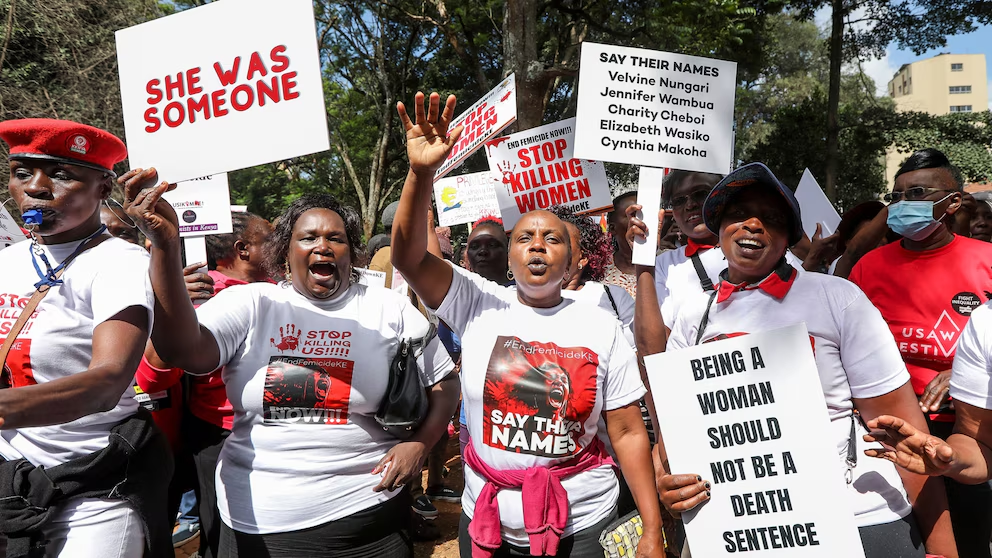
Gender Violence in Media
In recent years, the normalizing of gender violence in mainstream media has sparked significant concerns. News outlets, films, TV shows, and radio programs often portray violence against women as commonplace.
While this may seem like a reflection of society, it is, in fact, a powerful tool that shapes societal attitudes. The more we witness gender violence in the media, the more desensitised we become to its consequences.
This troubling trend directly links to the rising rates of femicide around the world.
To understand how normalizing gender violence affects society, we need to explore the power media holds. Through the lens of the Cultivation Theory, we can see how repeated exposure to violent media content fosters a distorted view of reality.
This theory, proposed by George Gerbner, suggests that prolonged media exposure shapes our perceptions of the world.
As a result, individuals who consume violent media may come to accept gender-based violence as a societal norm. This contributes to the growing indifference towards the suffering of women.
Furthermore, the portrayal of gender violence in mainstream media often lacks critical analysis or moral consequence.
Many films, television programs, and news stories present violent acts against women as mere plot devices, failing to address the deeper implications of such acts.
By normalizing gender violence in this way, the media diminishes the seriousness of the issue. As a consequence, society becomes desensitized, further entrenching the idea of femicide as an inevitable outcome of violence against women.
Transitioning from media portrayal to real-life consequences, the increase in femicide cases is one of the most alarming results of normalizing gender violence.
Femicide, defined as the gender-based killing of women, has become more prevalent in societies that routinely depict gender violence. The statistics speak for themselves.
In countries where the media normalizes gender violence, femicide rates have surged, demonstrating a direct link between the two.
The message is clear: when the media portrays gender violence as a regular part of life, society begins to view it as such.
Additionally, the role of feminist media theory, particularly that of Andrea Dworkin, helps us understand the harmful impact of media depictions of gender violence.
Dworkin argued that media plays a crucial role in reinforcing patriarchal structures. By portraying women as victims and perpetuating violence against them, the media serves the interests of a patriarchal society.
This aligns with the concept of normalising gender violence. The more people see it, the more they accept it, and the cycle continues.
One major issue with the normalizing of gender violence in media is the reinforcement of gender stereotypes. Media often depict women as vulnerable, passive, or dependent on men for protection.
This portrayal reinforces the idea that women are weak and need control. When violence is added to these portrayals, it presents violence as a natural consequence of these stereotypes.
The media show women as victims who deserve their fate, undermining the notion of equal rights and respect for women.
Moreover, the representation of men in media is equally problematic. Men are often depicted as aggressive, dominant, and in control.
This reinforces harmful masculinity norms and creates an expectation for men to act out violent tendencies. By presenting violence as a means of maintaining power, the media feeds into toxic masculinity.
These distorted depictions lead to the acceptance of aggressive behavior, particularly toward women, as normal and justifiable.
Transitioning back to the real world, the normalization of gender violence also has a profound impact on how women view themselves and their place in society. Studies have shown that when women are consistently exposed to media portraying them as victims, they internalize these messages.
This can lead to a sense of helplessness and the belief that they are powerless to escape violence. As a result, many women remain trapped in abusive relationships, feeling that there is no way out.
Similarly, the desensitization to gender violence in the media can create a sense of indifference in society at large. When people see violence against women as just another part of a story, they are less likely to take action.
Whether it’s through failing to report abuse, ignoring warning signs, or justifying violent actions, society becomes complicit. The widespread acceptance of gender violence in media ultimately leads to a more tolerant society toward such behaviors.
Additionally, the portrayal of gender violence in the media can have a particularly harmful effect on young people. Adolescents are highly impressionable and often turn to media for guidance on relationships and societal norms.
When they see violence as an acceptable way of resolving conflicts, they may emulate these behaviors in their own lives. This sets the stage for future generations to continue the cycle of gender violence, leading to more femicides and a more violent society overall.
From a global perspective, the effects of normalizing gender violence are not confined to any single country or culture. The portrayal of gender violence in media is a global phenomenon.
From Hollywood blockbusters to popular TV shows worldwide, the message remains the same: violence against women is not only acceptable but also inevitable. As this message spreads, so too does the incidence of gender-based violence. Countries with higher levels of media violence tend to experience higher rates of femicide.
Furthermore, it is important to highlight the role of social media in perpetuating the normalisation of gender violence. Platforms like Twitter, Facebook, and Instagram have become breeding grounds for hate speech and misogyny.
Victims of gender violence are often further victimised online, where their experiences are trivialised, mocked, or denied. The constant exposure to such online hostility only reinforces the belief that violence against women is not a serious issue.
Transitioning back to real-world solutions, addressing the normalization of gender violence in media requires a collective effort from all sectors of society. Media creators, journalists, and content producers have a responsibility to depict gender violence accurately and sensitively.
By showing the devastating consequences of such violence, media can help shift public perceptions and promote healthier attitudes. Additionally, education plays a key role in challenging the harmful stereotypes that perpetuate gender violence.
Moreover, feminist media activists, inspired by thinkers like Dworkin, must continue to push for systemic change. Their efforts to raise awareness about the role of the media in perpetuating violence against women are crucial.
By advocating for more inclusive and respectful portrayals of women in media, they help to deconstruct the harmful narratives that normalize violence.
In closing, normalizing gender violence in mainstream media is a dangerous and harmful phenomenon that contributes directly to the rise of femicide. The media shapes how we view ourselves and others, and when violence becomes a regular feature, it becomes normalized in society.
As we continue to consume violent media content, it becomes increasingly difficult to distinguish between fiction and reality. To combat this, we must hold the media accountable for the messages it sends and demand change.
One day, I found myself scrolling through social media when a troubling post caught my eye. It was a story about a woman whom her partner had brutally attacked.
The comments beneath the post were chilling; many dismissed the incident, while others justified the violence. It was a stark reminder of how desensitised we’ve become to violence against women.
What we see in the media shapes our attitudes, and that day, it became clear how deeply the normalisation of gender violence affects us.
When the media constantly presents violence as a part of everyday life, we begin to accept it as normal. This is why it’s so important to challenge these portrayals, to stop normalizing gender violence, and to work toward a society where femicide is no longer a tragic reality.








